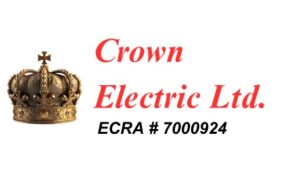Many electronic devices require multiple electrical outlets. For example, with a basic desktop computer, you’ll need an outlet for your monitor, CPU, speakers, wireless router, modem, printer, and any other devices you might want to plug in. Home theaters may also require multiple outlets.
While the typical solution is to get a surge protector or a power strip, these two options have important differences to consider. Most surge protectors are also power strips, but power strips are not necessarily surge protectors. You’ll often find them in the same aisle at a hardware store or convenience store. But you should know the difference before you buy.
What is a surge protector?
Although power strips are essentially multi-outlet extension cords, surge protectors are designed to keep electronic equipment safe from sudden or sudden electrical currents.
Overcurrent protection devices work by diverting excess voltage to the grounding port in the electrical outlet. Without this feature, excess voltage would flow through all connected power cables and cause permanent damage to connected devices.
The effect of overvoltage may be obvious, as when a light bulb goes out, or it may be more subtle, gradually weakening electrical circuits over time. High-end gaming consoles with complex microprocessors can cause terminal failure if the power is allowed to run too high or low.
An extreme example of an overvoltage is a lightning strike. But you’re more likely to experience power surges when your local utility company switches power grids or has equipment problems. Even though they try to keep electricity flowing consistently throughout the grid, outages do happen.
The most common instance of a voltage surge is when there is a shift in power demand, especially if the building has old or poor electrical wiring. Have you noticed that your lights flicker or dim whenever your refrigerator, air conditioner, hair dryer, or other powerful appliance is turned on? This sudden power draw can cause a temporary surge in the demanding circuit and affect all connected outlets. In North America, anything above the standard voltage of 120 volts is considered an overvoltage. Smaller surges can occur at any time without signs or warning, but they still exceed the normal operating voltage of the product.
What are you looking for
Surge protectors come in a variety of shapes and sizes. Some mount directly to the wall and act like a surge protector outlet. Most others come with a cable that can range from one foot to 12 feet long. When choosing the right surge protector, you’ll want to make sure it has:
Outlets for all your electronic devices. Proper distances for power outlets. Long enough cable.
You won’t benefit from purchasing a six-outlet surge protector when you have ten devices to plug into. The last thing you want to do is connect another surge protector or power strip to make up the difference. This increases the risk of overloading the circuit and voiding your warranty. If you’re not sure of the exact number of outlets you need, it’s better to overestimate than to underestimate.
Not all surge protectors are designed with power strips in mind. Some power strips are so bulky that they can block a free outlet (or two or three) when plugged in. Even if your current equipment uses standard two-prong plugs, it’s worth choosing a surge protector that has a few outlets spaced out. You can still use them all now, while still having the flexibility to handle any power strips in the future.
A surge protector won’t be much help if it can’t reach the nearest wall outlet. Sure, you can use an extension cord, but doing so doesn’t guarantee full protection and often voids the product’s warranty. So when in doubt, choose a surge protector with the longest power cable.
Performance Evaluations to Consider
Product packaging is designed to grab attention while conveying information. This can seem overwhelming, given all the specs and features. Focus on these specs and features first:
Joules (the higher the better): The number of joules listed on a surge protector represents its energy absorption rating. Think of it like a shield that blocks excess energy. Higher numbers mean the surge protector can withstand more (or larger) strikes during one or more events before wearing out. So if a surge protector has 500 joules of protection, it can theoretically handle ten 50 joule strikes, four 125 joule strikes, two 250 joule strikes, or one 500 joule strike. Small electronics (like lamps, radios, and battery chargers) are fine with joule ratings under 1,000. But for computers or home theaters, you’ll definitely want to consider surge protectors with joule ratings of 2,500 or more. Clamping Voltage (the lower the better): Clamping voltage—sometimes referred to as the Voltage Protection Rating (VPR) or Suppressed Voltage Rating (SVR)—indicates how long the surge protector will activate to divert excess voltage to ground. While the protection provided by the Joule sounds good, it’s the clamping voltage (maximum allowable voltage) that ends up being more effective. Lower numbers mean that the surge protector is less tolerant of overvoltage. So when you compare a surge protector with a clamping voltage of 330V (the best option) to one with a clamping voltage of 500V, the latter will allow a surge or spike to occur (which can damage components) before doing anything about it.Response Time (the lower the better): Response time (usually measured in nanoseconds) refers to how quickly a surge protector responds to divert excess voltage. While electronics appear to work instantly, they actually take time to work. Response time goes hand in hand with clamping voltage. Surge protectors with lower response times work faster to divert excess voltage before it has a chance to cause damage. If you want the best, choose ones with a response time of nanoseconds (or less). UL 1449 (Must Have): Underwriters Laboratories’ UL 1449 is the recognized safety standard that applies to every surge protective device (SPD). This standard lists certification criteria, design requirements, and product performance testing that manufacturers must meet for a surge protector to be considered safe for consumer use. If your surge protector doesn’t have this label somewhere on the box, it may not be a good choice for protecting your equipment.
Additional features
Many surge protectors offer a range of additional features. While these are useful, they can increase the purchase price. More expensive does not necessarily mean better. Focus on your needs first and make sure not to ignore the performance ratings mentioned above. It is up to each buyer to decide whether these additional features are useful or not:
USB ports, LED displays, Ethernet, coaxial and/or telephone jacks, three-line (or all-mode) protection, built-in circuit breaker, EMI/RFI filtering and/or power handling, UPS backup battery, replacement (or protection status) indicator lights and/or audible alarms, energy saving (e.g., primary plugs, timers, etc.), wireless remote control, motion sensors, whole-home surge protection
a guarantee
As with most consumer electronics, surge protectors come with a manufacturer’s warranty that covers the connected equipment up to a specified maximum dollar amount (which varies from product to product). Hopefully you’ll never have to use them, but it’s always best to be prepared. Be sure to read the fine print regarding warranty coverage carefully. Some claims require the use of a surge protector, all equipment connected to the surge protector (even if it’s not damaged), and original receipts.
There are usually many exceptions, conditions, and limitations that must be met before you get a dime, and a full refund is never guaranteed. You can also expect claims to take three months or more to process.
He remembers:
It is important to connect the surge protector to a properly grounded wall outlet. A three- or two-prong adapter does not count. Otherwise, it will not be able to protect against surges as intended. Joules are not everything. Make sure to consider the installation voltage and response time equally. Do not connect surge protectors to other surge protectors, power outlets, or UPS devices to get more outlets. You risk overloading the electrical circuits in your home, starting an electrical fire, or voiding the surge protector’s warranty. Surge protectors gradually wear out over time and will not always indicate when they need to be replaced. There is no hard and fast rule, except that it is a good idea to buy new surge protectors after the old ones have done their job (for example, if there are severe power fluctuations, blown transformers, or lightning strikes in your area).
Instructions
How long do overcurrent protection devices last?
You should plan to replace your surge protector every three to five years. You should do this sooner if the device starts to behave erratically, or if your home is experiencing major power problems.
How do I install a whole house surge protector?
Home surge protectors are installed either at the meter outside the home or at the circuit box inside. If you’re not sure how to install a surge protector, it’s best to have a licensed electrician do it for you, but in general, they’re installed between the main line that enters the home and the breaker panel that sends it throughout the building.
Thanks for letting us know!
Get the latest tech news daily.
Participate
Tell us why!
Other Not enough details Hard to understand



